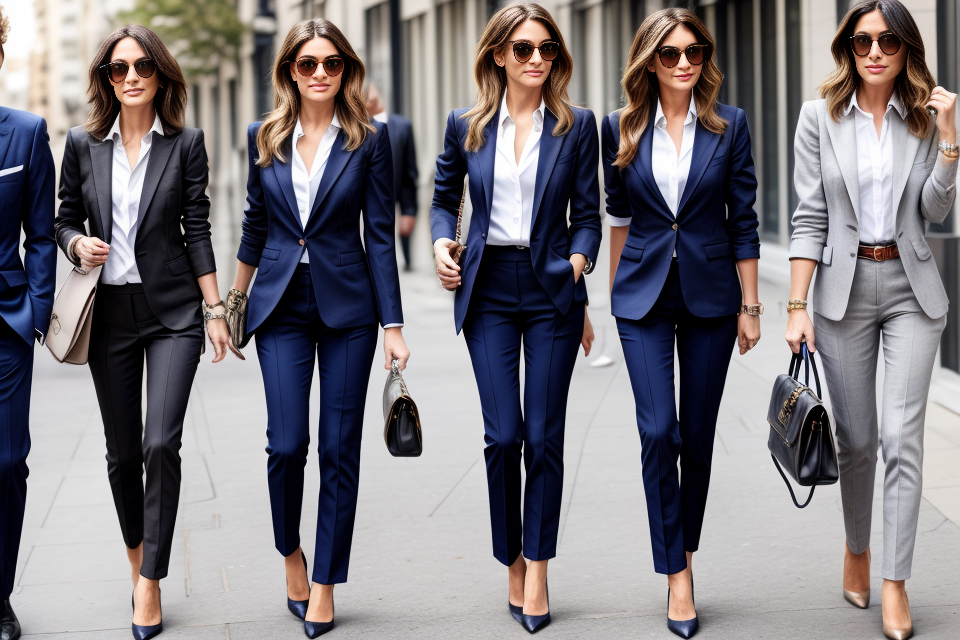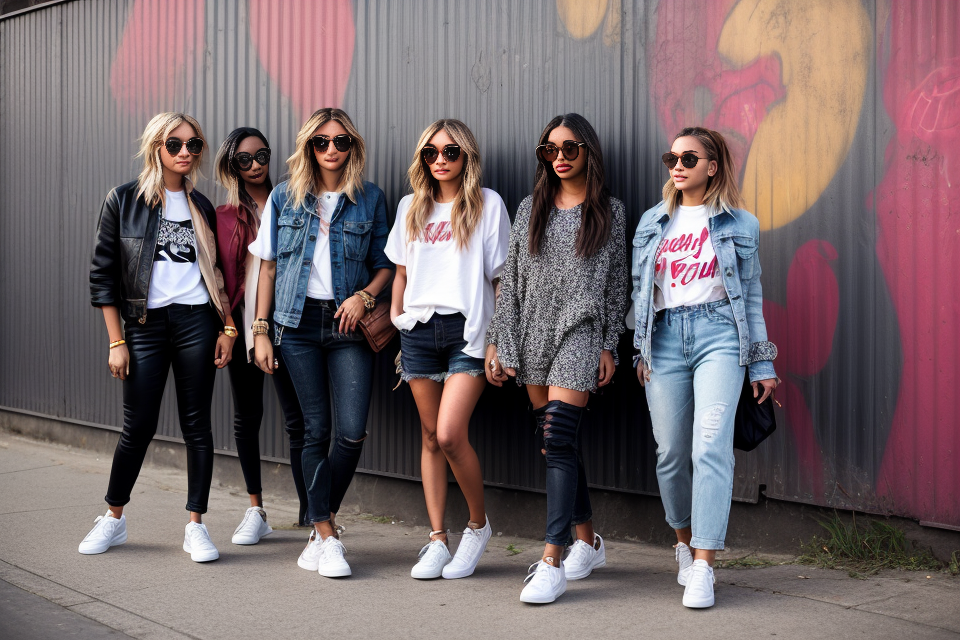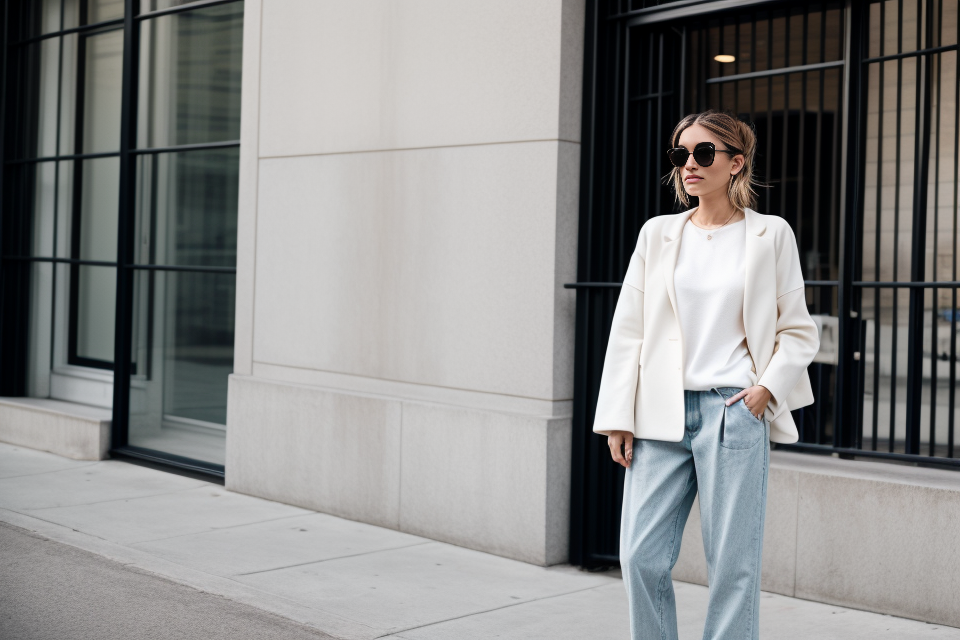
In today’s world, dressing for success is more important than ever. However, sometimes it can be difficult to strike the perfect balance between looking professional and casual. You want to make a good impression, but you don’t want to sacrifice your personal style in the process. In this article, we’ll explore some tips and tricks for dressing for success and looking both professional and casual. From choosing the right fabrics to pairing the right pieces, we’ll cover everything you need to know to make a great first impression. So, whether you’re heading to a job interview or just running errands around town, read on for some expert advice on how to dress for success without sacrificing your style.
The Importance of Dressing for Both Professionalism and Casualness
Understanding the Balance Between the Two
In today’s fast-paced and ever-evolving world, it is essential to strike the right balance between looking professional and casual. While professional attire conveys a sense of competence and reliability, casual dressing reflects a relaxed and approachable demeanor. This balance is crucial as it allows individuals to make a positive impression while still being able to connect with others on a personal level.
- The right balance between professionalism and casualness can help one project an image of confidence and competence, while still being approachable and relatable.
- Understanding the nuances of dressing for different situations is key to making a good first impression and building trust with others.
- Being able to convey both aspects of dressing in one’s appearance can greatly enhance one’s ability to communicate effectively and build meaningful relationships.
In conclusion, achieving the right balance between professionalism and casualness in one’s dress is essential for making a positive impression and building trust with others. By understanding the nuances of dressing for different situations, one can effectively communicate their competence and approachability, leading to greater success in both personal and professional relationships.
Situations Where This is Relevant
In today’s fast-paced world, it is important to dress appropriately for various situations. Whether it’s a job interview, a business meeting, or a casual get-together with friends, your attire can make a significant impact on how others perceive you. Here are some examples of different environments and contexts where looking professional and casual is necessary:
Job Interviews
Job interviews are a crucial part of the hiring process, and your attire can make a lasting impression on the interviewer. While it’s important to dress professionally, it’s also essential to avoid being too formal or stuffy. A good rule of thumb is to opt for a classic, tailored look that exudes confidence and competence.
Business Meetings
Business meetings are another situation where dressing for both professionalism and casualness is necessary. In many cases, business casual attire is appropriate, which means avoiding t-shirts, shorts, and other casual clothing while still keeping things comfortable and relaxed. A good rule of thumb is to opt for a nice button-down shirt or blouse, paired with dress pants or a skirt.
Networking Events
Networking events are a great opportunity to meet new people and make valuable connections. While it’s important to dress professionally, it’s also important to show some personality and style. A good rule of thumb is to opt for a classic, timeless look that can be dressed up or down depending on the occasion.
Casual Gatherings
Finally, even casual gatherings with friends and family can require some thought when it comes to dressing appropriately. While t-shirts and shorts may be acceptable in some casual settings, it’s important to consider the occasion and the company you’ll be keeping. A good rule of thumb is to opt for a casual yet put-together look that is comfortable and appropriate for the setting.
Mastering the Art of Mixing Casual and Professional Attire
Identifying Which Pieces to Incorporate
When it comes to mixing casual and professional attire, the key is to strike the right balance between the two styles. The following guidelines can help you identify which pieces to incorporate into your wardrobe to achieve a professional yet casual look:
Prioritize Neutral Colors
Neutral colors such as black, white, navy, and gray are essential when it comes to mixing casual and professional attire. These colors are versatile and can be easily paired with both casual and professional pieces.
Choose the Right Fabrics
The fabrics you choose can also make a big difference in achieving a professional yet casual look. Opt for high-quality materials such as cotton, linen, and wool, which are both comfortable and professional-looking. Avoid fabrics that are too casual, such as t-shirts and sweatpants.
Invest in Quality Basics
Quality basics such as a good pair of jeans, a tailored blazer, and a classic button-down shirt are essential when it comes to mixing casual and professional attire. These pieces can be dressed up or down depending on the occasion and can be paired with both casual and professional pieces.
Accessorize Wisely
Accessories can also play a big role in achieving a professional yet casual look. Opt for accessories such as leather belts, tailored scarves, and understated jewelry, which can add a touch of sophistication to your outfit without being too formal.
Keep it Simple
When it comes to mixing casual and professional attire, it’s important to keep it simple. Avoid over-accessorizing or wearing too many patterns, as this can detract from the overall professional look. Stick to a neutral color palette and keep the overall style classic and timeless.
By following these guidelines, you can incorporate both casual and professional pieces into your wardrobe and achieve a polished yet relaxed look.
Building a Capsule Wardrobe
A capsule wardrobe is a collection of essential clothing items that can be mixed and matched to create numerous outfits. It is a cost-effective and efficient way to build a wardrobe that is both professional and casual.
To build a capsule wardrobe, start by selecting a few key pieces that can be dressed up or down depending on the occasion. These might include a tailored blazer, a pair of dark wash jeans, a classic white shirt, and a versatile necklace or scarf.
Next, choose a few statement pieces that add interest and personality to your outfits. These might include a bold-patterned blouse, a bright sweater, or a statement necklace.
Finally, invest in a few classic accessories that can be worn with any outfit. These might include a leather handbag, a pair of black heels, or a simple watch.
By building a capsule wardrobe, you can create a variety of outfits that are both professional and casual, while also saving time and money.
Accessorizing Wisely
Accessorizing wisely is a crucial aspect of achieving a professional yet casual look. Accessories can elevate an outfit from basic to chic, while also adding a touch of personality to an ensemble. When it comes to dressing for success, it’s important to invest in accessories that complement your attire without overpowering it. Here are some suggestions on the type of accessories to invest in to achieve this balance:
- Quality Over Quantity: It’s better to invest in a few high-quality accessories that will last you a long time, rather than buying a bunch of cheap accessories that will quickly lose their appeal. Consider investing in a few statement pieces, such as a bold necklace or a pair of eye-catching earrings, that can be worn with a variety of outfits.
- Matchy-Matchy: Coordinating your accessories with your outfit can help create a cohesive and polished look. Try pairing a bracelet or necklace in a similar color to your outfit, or opt for accessories that feature a similar pattern or texture.
- Simple and Classic: Simple and classic accessories, such as a black leather belt or a classic watch, can never go out of style. These types of accessories can be worn with a variety of outfits and add a touch of sophistication to any look.
- Statement Shoes: A great pair of shoes can make or break an outfit. When it comes to dressing for success, it’s important to invest in a few high-quality pairs of shoes that are both comfortable and stylish. A pair of sleek, professional-looking loafers or a statement pair of heels can elevate any outfit.
- Subtle Sophistication: Subtle accents can add a touch of sophistication to any outfit. Consider accessories such as a simple statement ring or a delicate necklace with a small pendant. These types of accessories can be worn with both casual and professional attire, making them a versatile addition to any wardrobe.
Creating a Cohesive and Polished Look
Layering for a Casual Yet Professional Appearance
In the realm of fashion, layering is a powerful tool that can elevate any outfit from ordinary to extraordinary. It allows individuals to create a cohesive and polished look that is both professional and casual. By strategically adding layers to an outfit, one can transform a simple ensemble into a stylish and sophisticated outfit that is perfect for any occasion.
The significance of layering in achieving a cohesive and polished look cannot be overstated. It enables individuals to add depth and dimension to their outfits, while also allowing them to express their personal style. Whether it’s adding a lightweight scarf or a cardigan, layering can take an outfit from drab to fab in no time.
One of the most effective layering techniques is wearing a button-down shirt under a blazer. This combination creates a polished and professional look that is perfect for a business meeting or lunch. The button-down shirt adds a casual touch, while the blazer adds a touch of sophistication. This combination is versatile and can be dressed up or down depending on the occasion.
Another effective layering technique is wearing a turtleneck under a sweater. This combination creates a cozy and stylish look that is perfect for the winter months. The turtleneck adds a touch of formality, while the sweater adds a casual touch. This combination is perfect for a casual yet professional setting, such as a job interview or a networking event.
In conclusion, layering is a powerful tool that can help individuals create a cohesive and polished look that is both professional and casual. By strategically adding layers to an outfit, one can transform a simple ensemble into a stylish and sophisticated outfit that is perfect for any occasion. Whether it’s adding a lightweight scarf or a cardigan, layering can take an outfit from drab to fab in no time.
Paying Attention to Detail
Paying attention to detail is crucial when it comes to creating a professional yet casual appearance. A well-thought-out and coordinated outfit can make all the difference in how others perceive you. Here are some tips on ensuring that every aspect of your outfit is carefully considered:
- Choose the right colors: The colors you choose for your outfit can greatly affect the overall impression you make. It’s important to choose colors that are appropriate for the occasion and that flatter your skin tone. Avoid wearing too many bold colors at once, as this can be overwhelming and unprofessional.
- Pay attention to fit: Clothes that fit well can make a huge difference in how you look. Make sure your clothes fit you properly, and avoid wearing anything that is too tight or too loose. A well-fitting outfit will make you look more put-together and confident.
- Accessorize wisely: Accessories can add the finishing touch to your outfit, but it’s important to choose them wisely. Avoid wearing too many accessories at once, as this can be overwhelming. Stick to a few well-chosen pieces that complement your outfit, such as a simple necklace or a classic watch.
- Consider the occasion: The occasion of the event should dictate your outfit choices. For example, a business meeting may call for a suit and tie, while a casual lunch with friends may be more appropriate for a polo shirt and jeans. Make sure your outfit is appropriate for the occasion, and avoid being too casual or too formal.
- Take care of your grooming: Your appearance isn’t just about what you wear – it’s also about how you take care of yourself. Make sure you’re well-groomed and presentable, with clean hair, tidy facial hair, and neatly trimmed nails. A well-groomed appearance can make a big difference in how you look and how you’re perceived by others.
Grooming and Presentation
Grooming and presentation play a crucial role in creating a professional yet casual look. In this section, we will discuss the importance of maintaining a well-groomed appearance and provide suggestions on how to achieve it.
Importance of Grooming and Presentation
Grooming and presentation are essential in creating a positive first impression. They communicate your attention to detail, respect for yourself and others, and overall professionalism. A well-groomed appearance can help you stand out in a crowd and make a lasting impression on others.
Suggestions for Maintaining a Well-Groomed Appearance
Personal Hygiene
- Take a shower: Take a shower daily and use a body wash or soap that leaves your skin feeling clean and refreshed.
- Brush your teeth: Brush your teeth at least twice a day, once in the morning and once before bedtime. Use a fluoride toothpaste to protect your teeth and gums.
- Use deodorant: Use a deodorant that suits your skin type and scent preference. Avoid using overpowering fragrances that can be offensive to others.
Hair and Nails
- Wash your hair: Wash your hair at least twice a week to keep it clean and healthy. Use a gentle shampoo and conditioner that suits your hair type.
- Trim your nails: Trim your nails once a week to keep them clean and short. Use a nail clipper or trimmer to avoid biting your nails.
- Style your hair: Style your hair in a way that suits your face shape and personality. Use hair products that enhance your natural hair texture and add volume.
Clothing
- Iron your clothes: Iron your clothes before wearing them to remove any wrinkles and creases. Use an iron and ironing board to achieve a professional look.
- Choose appropriate clothing: Choose clothing that is appropriate for the occasion and setting. Avoid wearing clothes that are too revealing or casual for professional settings.
- Accessorize: Accessorize your outfit with jewelry, watches, and belts that complement your clothing and style. Avoid wearing too many accessories that can overwhelm your outfit.
Skin Care
- Moisturize your skin: Moisturize your skin daily to keep it hydrated and healthy. Use a moisturizer that suits your skin type and provides sun protection.
- Use sunscreen: Use sunscreen with an SPF of at least 30 to protect your skin from the sun’s harmful rays. Apply sunscreen to exposed areas of your skin, such as your face, neck, and hands.
- Clean your skin: Clean your skin twice a day to remove dirt, oil, and impurities. Use a gentle cleanser that suits your skin type and avoid using harsh soaps that can dry out your skin.
In conclusion, grooming and presentation are crucial in creating a professional yet casual look. By following these suggestions, you can maintain a well-groomed appearance that is both casual and professional.
FAQs
1. What is the difference between professional and casual dressing?
Professional dressing refers to clothing that is appropriate for formal or business settings, while casual dressing is more relaxed and comfortable. When it comes to looking professional but casual, the key is to strike a balance between the two styles. You want to appear polished and put-together, but also comfortable and approachable.
2. What are some tips for dressing professionally but casually?
One tip is to opt for classic, timeless pieces that can be dressed up or down. For example, a good quality blazer or a tailored button-down shirt can be paired with jeans or dress pants for a more casual look, but can also be dressed up with a dress or slacks for a more formal occasion. Additionally, pay attention to details like shoes, accessories, and grooming to add a polished touch to your overall look.
3. What types of clothing should I avoid when trying to look professional but casual?
Avoid clothing that is too casual or sloppy, such as t-shirts, sweatpants, or athletic wear. These types of clothing are better suited for workout or weekend activities, and can detract from a professional image. Instead, opt for clothing that is clean, well-fitting, and appropriate for the occasion.
4. How do I know what is appropriate to wear in different professional settings?
It’s always a good idea to do some research on the company culture and dress code beforehand. If you’re unsure, err on the side of caution and opt for a more conservative look. A good rule of thumb is to dress one level above the expected attire of the workplace. For example, if the typical attire is business casual, you could opt for a blazer and dress pants.
5. Can I still look professional if I wear bright colors or bold patterns?
Yes, you can still look professional while wearing bright colors or bold patterns. The key is to pair them with neutral colors and classic pieces. For example, a bright pink blazer paired with a white shirt and neutral-colored pants can still look professional and polished. Just be mindful of the occasion and the company culture, as some patterns or colors may be more appropriate for certain settings.


